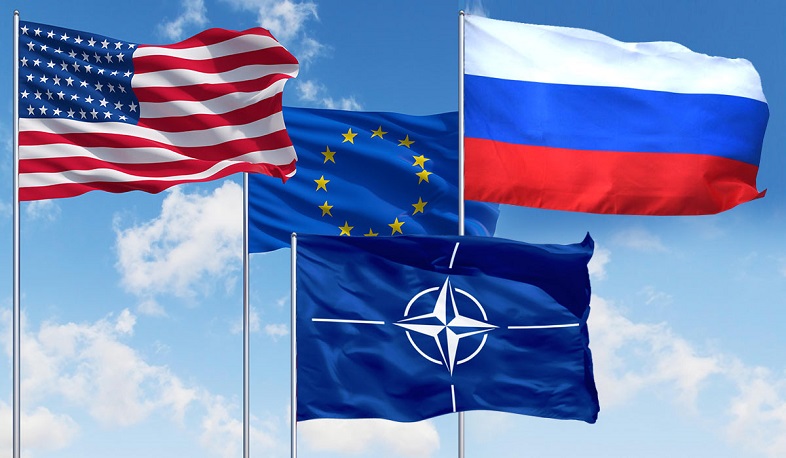The North Atlantic Treaty Organization (NATO) is in global headlines due to the ongoing Russia-Ukraine conflict. The NATO membership of Ukraine is the thorn in the whole issue; hence it is pertinent to know the history and formation of NATO. The North Atlantic Treaty Organization was created in 1949 by the United States, Canada, and several Western European nations to provide collective security against the Soviet Union.
Bank Maha Pack includes Live Batches, Test Series, Video Lectures & eBooks
North Atlantic Treaty Organization (NATO) treaty:
The North Atlantic treaty also known as the Washington treaty was the first peacetime military alliance between the United States and non-western countries. After the Second World War, the European nations were struggling to rebuild their economies and security. The economic advancement required a huge amount of aid to help the war-torn landscapes. Help was also needed to establish industries and produce food, while the threat from Germany and the Soviet Union prevailed.
The Marshall plan (1948): The US viewed the new Europe as economically strong, rearmed, and integrated which was important to prevent the communist expansion across the continent.
Hence, the Secretary of State George Marshall proposed a plan of huge economic aid to Europe known as the Marshall Plan or European Recovery Program, which facilitated European economic integration and promoted the idea of shared interests and cooperation between the United States and Europe. But the Soviet Union refused to participate in the Marshall Plan and did not even allow its satellite states in Eastern Europe to accept the economic assistance. These led to more division between the east and the west.
Members of North Atlantic Treaty Organization (NATO):
The original members were Belgium, Canada, Denmark, France, Iceland, Italy, Luxembourg, the Netherlands, Norway, Portugal, the UK, and the US. Later the original signatories were joined by Greece and turkey (1952), West Germany (1955; Germany from 1990); Bulgaria, Estonia, Latvia, Lithuania, Romania, Slovakia, and Slovenia (2004); Albania and Croatia (2009); Montenegro (2017); and North Macedonia (2020). France withdrew from the integrated military command of NATO in 1966 but remained a member of the organization; it resumed its position in NATO’s military command in 2009.
Warsaw Pact:
The Warsaw Treaty Organization, officially the Treaty of Friendship, Cooperation and Mutual Assistance, commonly known as the Warsaw Pact (WP), It is was a collective defense treaty signed in Warsaw, Poland between the Soviet Union and seven other Eastern Bloc socialist republics of Central and Eastern Europe in May 1955, during the Cold War. The Warsaw Pact was the military complement to the Council for Mutual Economic Assistance (CoMEcon), the regional economic organization for the socialist states of Central and Eastern Europe.
- The Warsaw Pact was created in reaction to the integration of West Germany into NATO in 1955 as per the London and Paris Conferences of 1954.
- Dominated by the Soviet Union, the Warsaw Pact was established as a balance of power to NATO. There was no direct military confrontation between the two organizations; instead, the conflict was fought on an ideological basis and in proxy wars. Both NATO and the Warsaw Pact led to the expansion of military forces and their integration into the respective blocs.
- Its largest military engagement was the Warsaw Pact invasion of Czechoslovakia in August 1968 (with the participation of all Pact nations except Albania and Romania),which, in part, resulted in Albania withdrawing from the Pact less than a month later. The Pact began to unravel with the spread of the Revolutions of 1989 through the Eastern Bloc, beginning with the Solidarity movement in Poland, its electoral success in June 1989 and the Pan-European Picnic in August 1989.
- East Germany withdrew from the Pact following German reunification in 1990. On 25 February 1991, at a meeting in Hungary, the Pact was declared at an end by the defense and foreign ministers of the six remaining member states. The USSR itself was dissolved in December 1991, although most of the former Soviet republics formed the Collective Security Treaty Organization shortly thereafter. In the following 20 years, the Warsaw Pact countries outside the USSR each joined NATO (East Germany through its reunification with West Germany; and the Czech Republic and Slovakia as separate countries), as did the Baltic states which had been part of the Soviet Union.
Formation Of Warsaw Pact:
- The Western powers agree in Paris to admit West Germany to the North Atlantic Treaty Organization.
- The Warsaw Pact, on the other hand, was only the first step in a larger strategy to strengthen the Soviet hold on its satellites.
- The deal was also used to strengthen the Soviet Union’s bargaining position in international diplomacy, as seen by the treaty’s concluding article, which stated that the Warsaw pact would lapse when a comprehensive East-West collective-security pact comes into force.
- Members of the Warsaw Pact formally rejected the decades-long confrontation between eastern and western Europe, with the exception of the Soviet successor state of Russia, who later joined NATO.




 Weekly One Liners 15th to 21st of Decemb...
Weekly One Liners 15th to 21st of Decemb...
 World Basketball Day 2025 Celebrates Bas...
World Basketball Day 2025 Celebrates Bas...
 UN Celebrates Second World Meditation Da...
UN Celebrates Second World Meditation Da...







